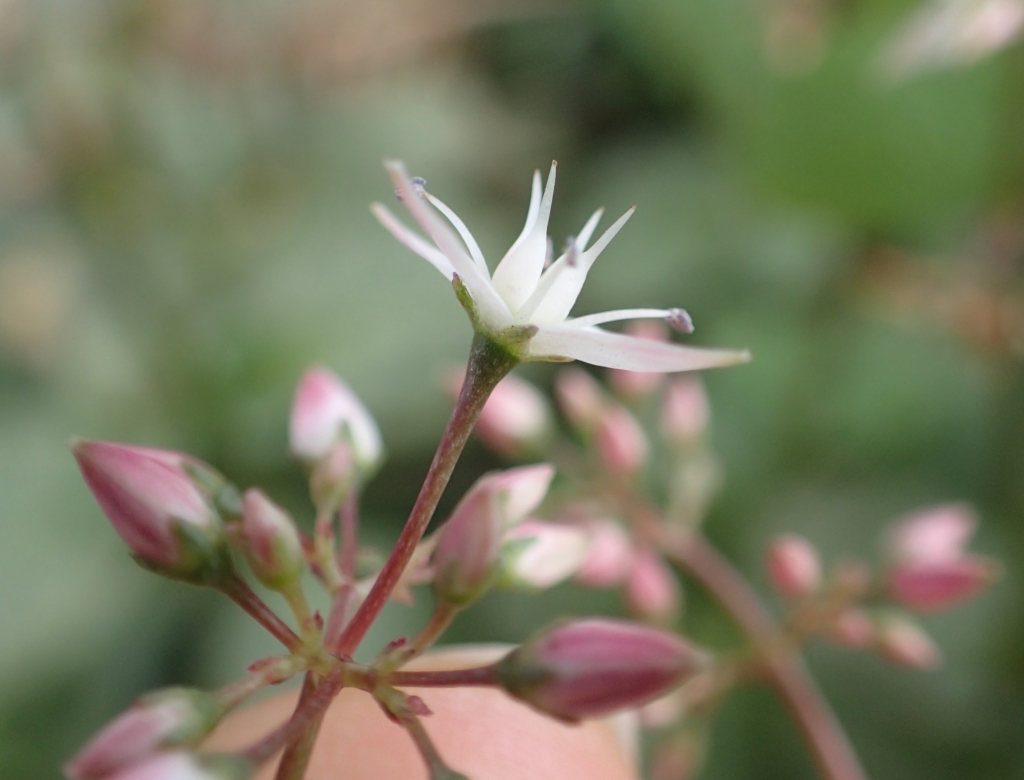Crassula multicava subsp. multicava
Fairy CrassulaPerennials with decumbent to suberect branches to 40 cm high, often much-branched. Leaves broadly elliptic to orbicular, 12–35 mm long, 10–25 mm wide, rounded, dorsiventrally compressed, usually abruptly constricted at base, glaucous, red-spotted, margins recurved; petioles 0–13 mm long. Inflorescence bracteate, a loose thyrse. Flowers predominantly 4-merous; calyx-lobes lanceolate, narrowly triangular, 0.8–1.3 mm long, acute; corolla white tinged pink, lobes linear-lanceolate, 4.4–5.6 mm long, pointed; nectary scales transversely oblong, 0.2–0.3 mm long, 0.4–0.6 mm wide, truncate; carpels oblong-reniform, with 12–16 ovules. Seeds usually not formed, but flowers sometimes giving rise to vegetatively produced plantlets. Flowers mainly spring.
VVP, GipP, OtP, WaP, Gold, CVU, DunT, HSF, OtR, Strz. Native to east coast of southern Africa. Recorded as naturalized near Bacchus Marsh, Winchelsea, Werribee, Geelong and Ocean Grove, presumably originating from nearby gardens or dumped garden refuse.
Commonly cultivated, and tolerant of deep shade.
Toelken, H.R.; Jeanes, J.A.; Stajsic, V. (1996). Crassulaceae. In: Walsh, N.G.; Entwisle, T.J., Flora of Victoria Vol. 3, Dicotyledons Winteraceae to Myrtaceae, pp. 542–555. Inkata Press, Melbourne.
 Spinning
Spinning

